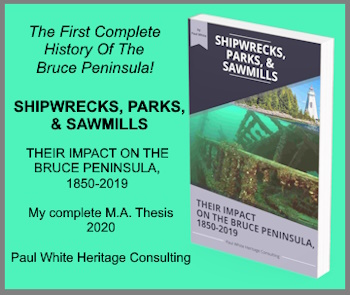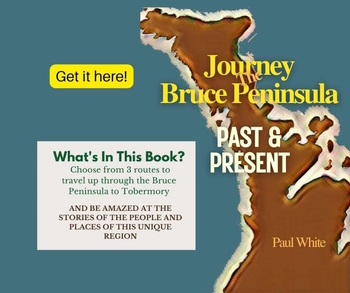The Impact of Snow is not what is Used to be!
The Impact of Snow is not what is Used to be! As snow removal equipment has improved the impact of snow on our lives has reduced significantly from previous eras.
The wintry blasts and frigid temperatures which have hit this region have dramatically changed the routine in our house.
On a normal morning, we arise and see the kids off to school on the bus, and then we enjoy a couple of cups of coffee before heading to town.
Lately, our mornings have been different from usual!
Now, the first person up in the morning turns on the radio to hear news about the weather, road conditions and road closures. The kids listen eagerly for bus cancellations and school closings. Next, I check the lane to make sure that I can get the car out without waiting for Mr. Cranny to come and plow. After a quick breakfast, I bundle up and go out to clean the snow off the car and get it started.
Because this is a history column, you are probably expecting to now read about the winter conditions that the pioneers in this area faced. Sorry, maybe in another column. Instead, I discovered how winter weather was treated in the very recent era of 1940!
In 1940, my parents were teenagers and my father takes delight in telling stories about the jalopies that he drove. However, in severe winters, his cars and those of others were not of much use. Instead, many area residents who lived in rural areas around Owen Sound were forced to rely on horse-drawn sleds for transportation.
Why were cars not of much use in the winter of 1940? After all, cars were an important part of society by that date. According to county records, the county council approved a directive to the road department to "Keep your roads open for motor traffic as long as is reasonably possible in the fall, and open them for motor traffic as early as possible in the spring..." The document went on to say that the roads must be "kept reasonably open and safe for horse-drawn traffic, and, after heavy storms, they must be broken sufficiently to allow horse-drawn traffic to operate".
Today. we both bless, and curse, the plows that clear the roads. We are thankful for their making the roads passable, but we curse the piles of snow that they deposit in laneways, blocking our exit to the freshly plowed roads. Things were distinctly different in 1940!
Instead of huge motor driven plows, the roads were cleared by horse-drawn graders equipped on "some sort of runners". It was not imperative that heavy drifts be cleared. Instead, the mountains of snow were leveled as best as possible using a disc or horse drawn roller. Any snow that was cleared had to be moved to the low side of the road.
Today, trucks travel the roads of the area spreading sand to make icy sections passable. Almost six decades ago, sand was deposited along the side of the road in the summer and fall for use in the winter. Usually these sand deposits were limited to areas of the road were there were hills and sharp curves. Although some of the sanding was done by highway employees, every effort was made to enlist the aid of area residents to go to the front of their property and spread sand when it was necessary.
If this was the state of winter roads in the area, how did the school buses make it through? They didn't. That was the era of country school houses, and most youngsters walked or came to school by sled. My father, who grew up in Sarawak, claimed he walked to the OSCVI in knee deep snow and sub-zero temperatures.
After reading about winter travel conditions and the dependency on horse drawn sleds in such a recent time as 1940, it makes one a little bit more appreciative of the services which we enjoy today!
A version of this story first appeared in my Local History column in the Owen Sound Sun Times on January 15, 1999.
More Grey County Pages
12-year-old Walks to Owen Sound in 1851 from the journal of a teenage boy's experience travelling with his brother in the untamed Upper Canadian wilderness.
1st Grey County Building in 1852 was only built after many hurdles were overcame.
Dr. Anna Henry from Markdale, was a medical trailblazer for women doctors in Canada, who helped lay the groundwork for the establishment for Women's College Hospital.
Egremont Township endured the usual growing pains of a pioneer community, but its early history records times when it was embroiled in a few contentious issues.
Euphrasia Township in the early years when spelling the name was a problem for those who called it home and those that wanted settle this new Grey County township.
Georgian Bay's 1st pioneer settler arrived on the western shoreline long before any other settler reached the area.
Grey County Heritage: A Valuable Resource which is rich and varied, as an important resource for future use for business, political, and many other purposes.
Grey County's Creation in 1852, laid the framework for organizing a county in the last wilderness in the southern region of what would become in the future the province of Ontario.
An Unlikely Hero From Grey County (Part 1) found his way from the farming community of Flesherton to missionary work in the Ottawa Valley, and beyond.
An Unlikely Hero Vs. The KKK (Part 2) Our hero from Grey County took his missionary zeal south of the border and ultimately crossed paths with the infamous KKK!
Barn Raising: A Pioneer Economic and Social Necessity as it provided settlers with an opportunity not only to build a barn, but also build a community.
"Barring Out": A Pioneer School Tradition was a custom which the settlers brought to the new world from England, or Scotland.
Ceylon Ontario: How it Got its Name: It is always interesting how a community got its name, but I doubt any place received its name from a more unique source!
Chatsworth Ontario: First Settlers took advantage of fulfilling the needs of pioneer travellers and built a thriving community in the Upper Canadian wilderness.
Clearing Trees a Daunting Task for Settlers as they worked to fulfill their obligations for their land grant.
Dornoch: or is it Smithville? Originally it was Smithville, then it became Dornoch. But, surprise it is still, in reality Smithville!
First Pioneer in Durham: Archibald Hunter established his family, and a hotel, in what would become the centre of the town of Durham.
Durham Ontario Influenced by the Saugeen River. This river provided a means to create new industries, but especially in the spring it can also pose a menace to the community.
Grey County Bylaws to the 1890s reveal a lot about the financing of local government, especially education in the early days of the region.
John Muir, the legendary naturalist, who promoted the idea of protected nature spaces, spent time in Ontario and I went to help find evidence of his stay in the Owen Sound area.
A Heroic Woman From Grey County who made great changes as a doctor in China in the 1890s and early 1900s.
Jesse James: In Grey County? An interesting question. Did the notorious gangster hide out in Proton Township? We will never know. But it is fun to speculate!
Kilsyth's Train Engine was one for the history books. It brought an evening of joy followed by disappointing news soon after.
The Knight's of Meaford have long history in that Grey County community. Their business forged by early settlers employed many locals and supported the economy.
Leith: Tom Thomson's Birthplace is part of the rich heritage of this community located on the east shore of the Georgian Bay north of Owen Sound.
The Leith Golf Course has provided many families with great memories. The history of this golf course starts, and ends, with the generosity of one family.
Agnes Macphail was a political trailblazer in a part of Ontario that one could hardly expect such radical action for the era in a rural region.
Markdale Ontario: The Beginning: originally known as Glenelg East, but the coming of the railway and the name of owner of the land for the station led to a change of identity.
Meaford's history is one of hardy and entrepreneurial pioneers carving their lives out of the wilderness of what would become Grey County.
Meaford Ontario, first called Peggy's Landing located on the shores of Georgian Bay has a rich history.
Meaford vs Purdytown. Conflict over the name of a new community was not unusual in early Grey County but electing a school trustee was the "hot button" issue in this rivalry.
Pioneer Clergyman: John Neelands was the first to minister to the first settlers' spiritual needs riding on horseback through the wilds of early Grey County.
Pioneer Doctor: Dr. James Smith, a local boy who became a doctor and served his community for his entire life was a testament to Grey County community spirit.
Pioneer Healthcare in Grey and Bruce counties was not administered by doctors, nurses, or pharmacists, no it was the responsibility of the women of the community.
Pioneer Homes in Grey County in the 1840s offered only basic amenities. Homes were basic because clearing the land to earn a living to survive were of paramount importance for those embarking on a new life.
Pioneer Ingenuity created many labour saving devices and methods and quite often helped to create a sense of community.
Pioneer Christmas: A Family Tradition as told to me by may grandparents who experienced Christmas as children in the 1880s and 1890s.
Pioneer Settlement Plans for Grey County began almost two decades before the rest of Grey County was available for settlement.
A pioneer road surveyor's impact on the local history of Grey and Bruce counties could have been dramatic, if it had not been changed by another surveyor.
Pioneer Teachers in Grey and Bruce Counties had a long and arduous task, not to mentions strict and confining job requirements for very little salary.
Plowing Match in Grey County in 1933 the first International Plowing Match held in Grey and Bruce counties and it's success led to more such events in Grey.
Settling Osprey Township: Parts of Osprey were considered too rugged to settle, but today they are prime real estate because of the great view!
Swamp College: Proton Township: this colourfully named institution of education in Grey County has provided many stories to the heritage of the region.
Sydenham Township's First Council undertook the often difficult task of creating a new municipal infrastructure.
The Impact of Snow is not what is Used to be! As snow removal equipment has improved the impact of snow on our lives has reduced significantly from previous eras.
Unique Characters: Nathaniel Herriman lived in Grey County and owned an inn to provide food and and accommodation to early travellers. Each day he performed a unique practice.
Unique Maps: Quilts Guided the Underground Railroad to enable runaway slaves to escape to Canada and freedom from the shackles that enslaved them.
The Women's Institute is a group of rural women that has made a difference to the quality of both urban and rural life in Grey County and across the country.





